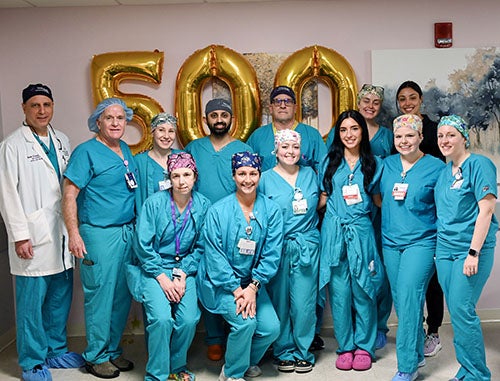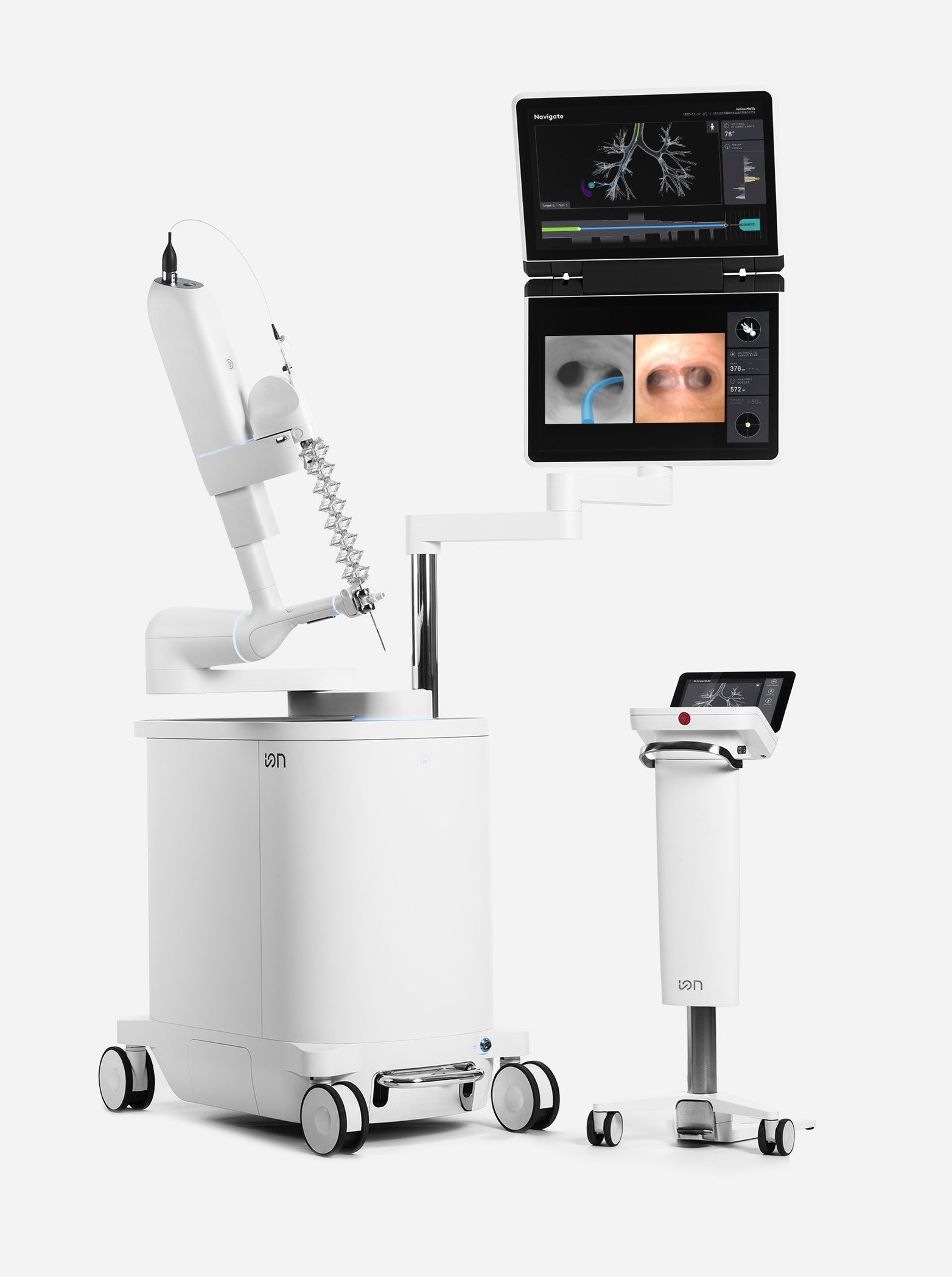Ion Endoluminal System

Dr. Anil Magge and the Saint Francis Hospital Interventional Pulmonary team, continue to lead the region in benefiting
over 500 patients with the Ion endoluminal system!
Is my lung nodule cancerous?
If you or someone you know has been diagnosed with a suspicious lung nodule or lung mass and want to know with certainty if it is benign or cancerous we want to share with you information about the Ion endoluminal system by Intuitive.
What is the Ion Endoluminal System?
Ion is the shape sensing robotic-assisted bronchoscopy platform made by Intuitive, the pioneer in robotic-assisted surgery with da Vinci systems. This novel technology allows Anil Magge, MD, our Interventional Pulmonologist, to biopsy suspicious peripheral nodules and masses. The Ion system features an ultra-thin, ultra-maneuverable catheter that allows navigation far into the peripheral lung, and with unprecedented stability, enable the precision needed for biopsy compared to traditional navigational techniques. It features:
Reach
The ultra-thin catheter and integrated vision probe provide the physician direct vision to reach all parts of the lungs.
Precision
The shape-sensing technology provides precise location and shape information throughout the whole biopsy process. The system holds the catheter in place for precise placement for biopsy tools.
Flexibility
The catheter can move 180° in all directions and the Flexision™ biopsy needle, a flexible biopsy needle compatible with Ion, help enable biopsy.
How Ion benefits patients:
Prior to Ion, one common method to biopsy peripheral lung lesions was to use a live CT scan imaging and a needle, entering the chest wall and lung from outside the body. However, this method of biopsy is associated with significant risk of collapsing the lung, which can require hospitalization for some patients. Compared to previous navigational bronchoscopy platforms, the flexibility and shape-sensing capabilities of the Ion catheter increase diagnostic capabilities, enabling a more precise biopsy. When used with lung cancer screening, Ion supports early diagnosis and staging of the lung cancer, often with just one minimally invasive procedure.
Ion benefits:
- Minimally invasive method for lung biopsies
- Ability to biopsy nodules previously inaccessible
- Capacity to catch lung cancer at an earlier stage, resulting in improved outcomes and survival rates
- Marking lung nodules to make surgery quicker

What will my physician do?
If you and your doctor decide that robotic-assisted bronchoscopy is right for you, here is what may happen.
- During robotic-assisted bronchoscopy with Ion, your physician guides an ultra-thin catheter through your airway to the area of your lung for biopsy.
- The small, flexible catheter can reach all segments of the lung—even far into the outer lung.
- Once at the location of the nodule for biopsy, the catheter locks in place. Your physician will insert biopsy tools through the catheter to take a sample of your lung tissue.
Talk with your physician to find out if you are a good candidate for the non-invasive lung nodule biopsy.
Meet Our Team

|
|---|

For more information about Trinity Health Of New England’s Interventional Pulmonology services, please call 860-714-4055

